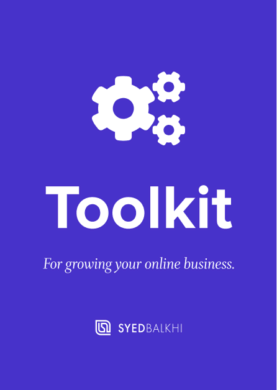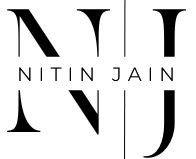An excellent method to repurpose your information and add value to it is to turn it into an eBook. It can be utilized to help create leads, increase brand recognition, draw in new readers, and boost profits.
You must first choose a subject and a format for your eBook. It might consist of a number of short stories, a detailed instruction manual, or even a collection of interviews. In order to avoid boring your readers, it is advisable to keep the topic narrow while simultaneously making sure that there is a wide diversity of content.
Once you’ve chosen your subject, the next step is to put all of your previously published material together into an eBook. Find relevant content by searching through your archive of blog posts, articles, and social media updates. To fill up any gaps, you might also wish to develop some brand new material.
Before including a piece of content in your eBook, make sure to double-check it. Make sure it is current and consistent with the message of your brand. In order to break up the material and make the eBook more aesthetically appealing, you also need to include photos and graphics.
You have a few options when it comes to formatting your eBook. Use an existing template or create one from scratch using a program like Adobe InDesign. You ought to think about providing it in many formats, such as PDF, EPUB, and Kindle versions.
Then you can market the eBook by posting it on your website, sending out emails to your list, and posting about it on social media. This should encourage more individuals to read your material and grow your readership.
You can easily build a helpful and valuable eBook that will help you and your readers by taking the time to curate and compile your existing information.
1. Updating previous blog posts with new content

Are you hoping to give your older blog posts a new lease on life? Update posts and give them a second chance to be viewed by new readers by repurposing information. You can completely change a post while retaining the essential elements of the original material by making a few minor changes.
Steps for Updating Old Blog Posts with New Content
The following methods can assist you in adding fresh content to previous blog posts:
- List the posts that require rewriting.
- Verify the information’s accuracy and timeliness.
- Any old information should be updated and replaced with relevant material.
- Find ways to enhance or contribute to the existing content.
- Make a decision regarding whether to leave the post as is, delete it, or start over.
- Include photographs, videos, infographics, charts, and other visuals in your article.
- To attract new readers, advertise the post on social media and other websites. Why You Should Update Your Old Blog Posts
Many benefits can be derived by updating previous posts. Here are a few benefits you might encounter:
- Bringing in more readers for your blog.
- Increasing visibility in search results.
- Boosting both traffic and subscriber counts.
- Enhancing reader interaction and engagement with current content.
- Fostering connections with influential people, websites, and other bloggers
showcasing your knowledge of and authority in your niche.
2. Creating a Series of Blog Posts on a Single Subject
 Publishing a series of blog entries on the same subject is one of the best ways to repurpose material. A well-written blog article series should flow naturally and be cohesive. By breaking up a single topic into several blog entries, you can thoroughly investigate it while also giving your audience useful information.
Publishing a series of blog entries on the same subject is one of the best ways to repurpose material. A well-written blog article series should flow naturally and be cohesive. By breaking up a single topic into several blog entries, you can thoroughly investigate it while also giving your audience useful information.
When creating your blog post series, you should make sure that each piece has a specific goal and that the series as a whole makes sense. Determine subtopics that fall under the major themes you want to explore after defining your primary arguments. This will aid in the organization of your series and guarantee that each item speaks to the particular requirements of your audience.
Throughout your writing, be sure to use pertinent keywords to increase your visibility on search engines. Additionally, referencing earlier articles in your series encourages reader interaction and keeps them coming back for more. Utilize original strategies to keep readers interested in every post, such as interactive features like polls or quizzes.
Above all, keep in mind to provide your readers with something worthwhile. Your blog article series should be engaging, educational, and beneficial to your readers. Additionally, it ought to be customized to meet their unique needs and interests. Your blog post series can be a terrific method to reuse content and get more use out of your current material with careful planning and intelligent execution.
3. Using written content to create visual content like infographics
Repurposing written content into visual form is a clever and successful technique for doing it. It’s an excellent approach to adding a dynamic graphic element to articles or blog entries or to breaking up long-form text. One sort of visual content that can be produced from written content is infographics.
Infographics are educational images that present complex information, facts, or concepts in a visually appealing manner. They can be used to provide clear narratives or conceptual explanations. For instance, if you wrote an article about the surge in mobile usage over the past ten years, you could make an infographic to better illustrate the facts using graphs, pie charts, and other visuals.
You can make stunning infographics with the help of a variety of tools. You can purchase pre-made templates or use Canva, a great tool for creating infographics from scratch. The majority of these systems also let you change the infographic’s colors, fonts, and other design components. Additionally, some platforms offer automated solutions for data visualization.
When your infographic is complete, you can post it on your website or social media to further promote your content. To further advertise your company or brand, you can also incorporate them into a bigger content marketing campaign.
In the end, turning written content into visual content, such as infographics, is a successful approach to repurposing it and engaging your audience. You can take existing content and transform it into something fresh and intriguing with the correct tools and a little imagination.
4. Webinar Production Using Pre-Existing Content and Scripts
The ability to interact with an audience and forge connections through webinars makes them a fantastic tool for repurposing information. Webinars can significantly assist you in reaching a wider audience, whether your content is instructional, informative, or amusing. Fortunately, building a webinar from pre-existing content and a script is not too difficult.
Making a script from your existing content is the first step. The script should cover all necessary details as well as any additional information you feel is necessary. Make sure the script is entertaining and easy to read when drafting it. In order for the webinar to flow naturally, make sure that there is an introduction and a conclusion.
When the script is finished, it’s time to put the webinar together. You can hold the webinar on a variety of platforms, including Zoom, Google Hangouts, and Skype. To get as many people as possible to the webinar, you’ll also need to choose a date and time for it and make sure it’s marketed beforehand.
It’s crucial to conduct yourself professionally and make sure the webinar’s material is appropriate for the target audience. Additionally, be sure to engage the audience by posing questions and inspiring them to participate in the debate. This will keep the webinar interesting and educational.
Finally, you can reuse the content after the webinar by using the recording. You may make a blog post, write an essay based on the webinar, or publish the recording on YouTube. The webinar’s audience will grow as a result, reaching even more individuals.
A fantastic approach to repurposing your material and expanding your audience is to create webinars using the script and content you already have. With a little bit of planning, practice, and preparation, you’ll be hosting productive webinars in no time!
5. Using videos to create online courses or classes
An excellent way to reuse information and convert it into business is by turning existing video content into online courses. Additionally, it might allow you to reach a larger audience with your information.
You’ll need to have some form of video to utilize as the foundation for your course before you can move on. These could be presentations, webinars, seminars, tutorials, or any other type of video that has a purpose in education. Additionally, you should make sure the information is current and applicable; older videos may need to be changed before they can be used in an online course.
Once your video content is prepared, you can start to turn it into a planned learning strategy. Start by segmenting the videos into more digestible, smaller sections. Give special attention to clearly defining the goals and purposes of each module. You can use this to assist you in developing lesson plans and exercises that complement the major themes of your course.
Include additional material in your course structure planning, such as quizzes, workbooks, textual instruction, and practice exercises. This will give your course some diversity and make the subject matter simpler to understand. You could even want to think about adding new portions to the original video to add more information.
Don’t forget to include opportunities for assessment and feedback. It helps to keep things interesting by providing tools for students to evaluate their development and get feedback from teachers or other students.
Any existing video footage can be transformed into an in-depth and educational online course with a little time and effort. This gives you the chance to reuse your previous work in a fun and novel way while also imparting helpful knowledge to others.
6. Content Repurposing for Social Media Updates
One efficient technique for reusing content is to use it on many platforms. It’s particularly helpful when it comes to social media, where you can easily reach a larger audience with your message.
The ideal technique to expose more people to your material is through social media updates. You can produce something fresh that will catch your readers’ interest by using previously published blog pieces, videos, or other multimedia.
The ability to adapt your content to the platform is one huge benefit of using social media for content repurposing. You may adapt your post to each platform’s personality and user base to make the most of it. For instance, you can use photographs and succinct captions on Instagram to convey your message, while you can use a hashtag or two on Twitter to increase your audience.
Additionally, you can produce material especially for social networking. This can entail producing original video and image material that is suited to the platform or live streaming on websites like YouTube, Facebook, and Instagram.
A smart strategy to increase interaction with your content is to produce new content frequently for social media updates. Keep an eye on how each post is being received and refresh your content with the more popular subjects.
When sharing content on social media, keep consistency in mind. You’ll reach more people and get the outcomes you want with a regular posting schedule. Additionally, it makes it simpler to monitor your development and determine what kind of material is doing the best.
7. Creating Podcasts from Written Content
Podcasting can be a great option for people who want to reuse information but need a different medium. Podcasts can easily be made from written content, and audio content is growing in popularity.
It’s not difficult to turn textual information into podcasts, but there are a few crucial steps you must take.
- You must first choose which written material will serve as the foundation for each podcast episode. Don’t be scared to use your imagination; you don’t have to pick just one blog post or article; you can combine several pieces of content to make an engaging episode.
- It’s now time to begin the recording procedure after choosing your content. To help you tune the sound levels and remove background noise, you will need a good microphone and an audio editing tool.
- Scripting is a crucial component in producing a podcast from textual content. A script that guides you through the episode must be written out. The themes you want to discuss should be in the script, along with any supplemental material like music and sound effects.
- So that you can go back and correct any mistakes, make sure to record many takes. Don’t hurry through words or phrases when reading your script; be sure to do so clearly. The podcast gains authenticity and intrigue by reading in a conversational style.
- It’s time to edit when you’ve finished recording your episode. You can use the audio editing software of your choice to change sound levels, remove errors, and add any extra components, such as music or sound effects.
- When your podcast is finished, you can finally post it online. You may either upload your podcast to your own website or utilize a podcast hosting provider to help market and distribute it.
A podcast built on written content can be a terrific way to expand your audience and reuse previously published material. Podcasting may be a terrific method to reuse content with a little bit of planning and some basic audio editing skills.
8. Making a White Paper or Research Paper from Content Already Existing
An excellent option to reuse previous information is to turn it into a white paper or research paper. Without having to start from scratch, this can assist you in producing something original and innovative. Writing a white paper or research paper can help you become recognized as an expert and credible member of your field.
You must first decide on the main points of concentration for your paper before you can move forward. Choose issues that are pertinent to your audience and supported by research and statistics. As soon as you have decided on a topic, you should begin compiling evidence to support it. Both primary and secondary sources, such as other blogs, papers, and articles, may be included in this.
Once you have acquired all the necessary data, you may start putting the paper’s structure together. Strong opening sentences establish the tone for the entire document. From there, you can elaborate on each topic. Citations and references should be used where appropriate. Don’t forget to add visual components to the document, such as graphs and infographics, to make it more engaging.
Make sure to thoroughly check the essay before you post it to catch any spelling or punctuation mistakes. To make sure the paper is accurate and consistent throughout, you should also have a second pair of eyes review it. Then you can start marketing it. Share it with key industry contacts, publish it on your website and social media, and send it to blogs.
9. Create a blog post series from an eBook.
Repurposing your content is a terrific way to increase its reach and effectiveness. You may quickly convert chapters or sections of your ebook into standalone blog posts, expanding your readership and possibly driving up sales. Making blog posts from an ebook can also increase your visibility and influence while giving your readers the opportunity to learn more about the topic.
When writing blog posts based on an e-book, be sure to focus on one idea or subject in every post. This will keep your readers interested and prevent them from becoming overloaded with data. To guarantee that each post offers your readers something fresh, try to make sure it stands on its own and is unrelated to the others.
Read your ebook and make note of the main ideas and subjects before you start writing posts. This will help you determine how many posts you can write as well as how many topics each post should cover. You can begin to divide the ebook into individual posts once you’ve determined the points and topics.
Put a priority on offering insightful commentary and relevant information when creating blog posts. Use the blog entries to provide further explanation if any parts of the ebook require it. Include backlinks to the main ebook page as well as connections to relevant pages. This will both keep your readers interested and persuade them to buy the ebook.
Lastly, be sure to promote the blog entries well. Send emails to your subscribers, share the posts on social media, and publish them on relevant forums. This will boost the visibility of your blog entries and the likelihood that readers will see them. Regularly doing this can also help you stay in people’s minds and reach a wider audience.
10. Idea Generation for Blog Posts for Other Publications
Using concepts from your blog entries to create articles for other sites is one of the most efficient ways to repurpose content. By doing this, you can expand your audience and enhance your authority in your industry. You can write new material more quickly and efficiently by using previously written blog post ideas.
Think about a blog article you wrote but felt didn’t generate much traction to start this approach. Use the subject of that post as the basis for a piece for Medium, LinkedIn, a magazine, or even a newspaper. This will increase readership and broaden the subject matter of your article.
When writing an article for a different newspaper, keep in mind that the readership can be different from your usual one. Ensure that the language and tone are modified to suit the intended audience. Take into account the article’s length as well; some magazines have rules dictating the maximum word limit. Be careful to follow the publication’s formatting requirements as well.
It’s time to submit the article once you’ve finished writing it. Make sure you are sending it to a publication that is accepting of new content by doing your homework. Read the submission requirements carefully and abide by them. In the submission, include a brief overview of your article and a sample of it. The majority of magazines also ask you to complete a form with your contact information and a brief bio.
Repurposing material is easy when you have your blog post concepts published on other websites. It can help you gain more followers, demonstrate your subject-matter expertise, and enhance website traffic. You can generate content that appeals to many audiences with a little bit of research and effort, and you’ll be well on your way to being a published author.
11. Creating a Premium Newsletter or Membership Site Using Existing Content
Repurposing already-existing content is made easy by setting up a newsletter or membership website. You can put the content into consumable form for your readers or subscribers, whether it’s a collection of blog entries, e-books, or podcast episodes. This is not only a terrific method to extend the usefulness of the content you’ve previously written, but it may also help you position yourself as a subject-matter expert.
A premium newsletter or membership website needs to be carefully planned. List all the subjects and themes you intend to cover first, and then sketch out the content’s organizational structure. You can decide to arrange it according to date, subject, or length of information. Start accumulating current stuff that pertains to those topics next. Consider including special content as well if you are building a premium newsletter or membership website. Videos, special reports, Q&A sessions, and interviews are examples of this kind of content.
Once the existing content has been put together, you may begin formatting it. Create divisions or categories from your list of themes, then gather the information for each one. Make sure to give the author credit and include a link to the original source if you’re using pre-existing content. Lastly, include a comment at the conclusion of each section outlining what the reader can anticipate from the following one.
You should keep in mind that readers should be able to easily browse and understand your premium newsletter or membership site as you design it. The tone should remain constant and be centered on offering useful information. You may save readers time and ensure they only see the greatest, most pertinent stuff by making sure your content is set up correctly.
Frequently Asked Questions about Creative Ways To Repurpose Content
Q: Commonly Asked Questions regarding Ingenious Content Repurposing
What are the advantages of creating an eBook from content?
A: An eBook may be a widely distributed piece of content that is simple to obtain. It may be used to increase brand recognition, get people to stay on your website longer, and interact with readers more deeply than with regular blog entries.
Q: What are the advantages of updating older blog entries with new content?
A: A good strategy to keep information current and pertinent is to add fresh content to older blog posts. This can involve providing fresh perspectives on the same subject, updating the information to reflect current trends or shifting facts, and more.
Q: What are the advantages of writing several blog posts on the same subject?
A: A series of blog entries on the same subject might serve a number of objectives. It allows you to group relevant themes together for a more comprehensive understanding of the problem, demonstrates to readers your subject-matter expertise, and allows you to give more specific information inside the blog post series.
Q: What advantages do infographics have over other types of written content?
A: Infographics are very popular content pieces that are made to be easily digestible and have eye-catching imagery. Repurposing textual content into an infographic increases engagement with the content because infographics are more likely to be shared than written content.
Q: What are the advantages of generating webinars using pre-existing scripts and content?
A: Webinars are interesting, interactive bits of material that can increase viewership. A webinar format can simply be created using pre-existing content and scripts, offering viewers more information and the chance to ask questions or discuss the subjects in greater detail.
Q: What are the advantages of turning videos into online courses, or e-courses?
A: Videos can be modified and used in online courses or e-courses. This offers viewers the chance to deepen their education in a fun and engaging way that is more practical and hands-on.
Q: What are the advantages of using recycled content for social media updates?
A: Repurposing content for social media is a powerful technique to expand the audience for current content and boost engagement. Social media sites may swiftly publish brief excerpts or titles that link to the original content and are also better suited for mobile access.
About Me
Nitin Jain is a visionary entrepreneur and a published author, driven by a passion for mentoring and fostering growth. Nitin is the C.E.O. and Founder of India PR Distribution, a distinguished name in the realm of Public Relations. India PR Distribution is one of the top-rated PR Agencies in India, having won numerous awards where it has been ranked as the number 1 press release distribution for the Indian subcontinent.
Latest Posts
Download Nitin's free Growth Toolkit

Author Profile
- Nitin JainArticles by Nitin Jain
- Nitin Jain is the founder and C.E.O of India PR Distribution - India's top Press Release Distribution and PR Agency. Nitin has more than 20 years of experience in PR, Corporate Communications, Digital Marketing, Branding Strategy and Lead generation.
Latest entries
 Press Release TipsAugust 2, 2023How to Upcycle Content: Creative Ways To Get More Value From your content in 2023
Press Release TipsAugust 2, 2023How to Upcycle Content: Creative Ways To Get More Value From your content in 2023 Digital MarketingAugust 2, 2023Unlock Your Content Potential: A Guide to Repurposing
Digital MarketingAugust 2, 2023Unlock Your Content Potential: A Guide to Repurposing Press releaseAugust 2, 2023Unlock the Benefits of Repurposing: What is Content Repurposing & Does It Work?
Press releaseAugust 2, 2023Unlock the Benefits of Repurposing: What is Content Repurposing & Does It Work? Search OptimizationAugust 2, 2023Leverage Voice Search For Local Biz Success: Tips & Strategies
Search OptimizationAugust 2, 2023Leverage Voice Search For Local Biz Success: Tips & Strategies





